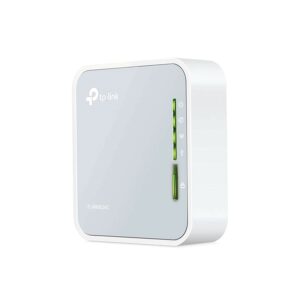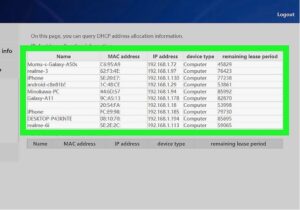Recently, most technologies and mobile devices must run on fast internet connections to function adequately. A good internet connection is paramount for our day-to-day lives, from working online and holding Zoom meetings to streaming movies and missions on our favourite platforms. The importance of a good internet connection must be emphasized.
Meanwhile, some individuals still use old routers or modems for their Internet connections, and others have evolved into dual-band wireless network routers. These routers provide superfast internet connection and ensure lag-free Internet access. If you are wondering what a dual-band wireless network router is, sit tight because this article will explore all you need to know about this router.
What Is a Wireless Networking Router?

A wireless networking router is a small but mighty device. It usually comes in plastic cuboid-like shapes. It is a device that can supply internet connection to your devices. As the name implies, it does not use cables and wires to function.
No products found.
Components of a Wireless Networking Router
Different parts of a router make it function at its best. Below are some of the parts of a wireless network router.
Processor
A wireless network router does a lot of data processing. It helps determine the routes and security of a network. A processor is one of the most essential parts of a router.
Flash Memory
A flash memory is a part of a wireless router that stores the memory of the router’s operating system. When the device boots from the ROM, it passes control to the operating system in the flash memory.
ROM
The ROM is used to store the bootstrap of the router. The ROM of a router is similar to that of a computer.
RAM
The RAM of a router is the main memory. It loads the router operating system and data that is currently being processed.
Functions of a Wireless Networking Router
A wireless networking router has several functions. Below are some of the essential functions.
- A wireless network router is used as a network gateway.
- The help to direct packets from one network to another.
- Routers have in-built security firewalls that secure devices within the network connection.
- Wireless networking routers have specific pathways that help move the data packets from source to destination.
- Wireless routers can split extensive networks, thereby increasing the efficiency of a network and simplifying network management.
The Dual-Band Wireless Networking Router
A dual-band wireless networking router can transmit and receive data over two different frequency bands at the same time. The two frequency bands are 2.4 GHz and 5 GHz. However, before explaining how a dual-band wireless networking router works, it is essential to understand the difference between both frequency bands.
The 2.4 GHz Band
The 2.4GHz frequency band has been used for wireless communication for ages. It is the most common frequency band for wireless communication, so it is susceptible to interference from other devices like microwaves, Bluetooth devices, and cordless phones. The 2.4 GHz frequency band offers better coverage and penetration through walls and obstacles. This makes it suitable for devices far from the primary source to connect easily. However, due to its popularity and lower bandwidth, a 24 GHz frequency band router is prone to congestion and slower speeds.
The 5 GHz Band
On the other hand, the 5 GHz frequency band is faster. Compared to the 2.4 GHz, it is not easily disturbed by external interference. This frequency band has a lot of available channels and networks, thereby decreasing the congestion rate and ensuring a high performance. However, it also has its downside. The 2.4GHz can extend to a long range and penetrate walls. The 5 GHz band has a short range and may be unable to send connections to dead ends.
The Dual-Band Wireless Router
A dual-band wireless networking router can use both frequency bands. It allows devices to connect to either band based on the requirement of the device. It is the best type of router one can opt for, especially for the many features it offers. A dual-band router will ensure many devices can connect simultaneously and still reach long ranges without compromising the network’s speed.
The dual-band wireless network routers will also allow you to make a choice. You can decide to use any of the frequencies you deem fit. In the long run, this router is highly suitable for the recent Internet demands that most devices require.
Single-Band vs Dual-Band Wireless Routers
You may still doubt the man of the game in the router world. Below is a simple comparison between a single-band and a double-band wireless router based on their components and features.
Performance
A dual-band wireless router has better performance than a single-band router. This is a result of the two-frequency feature.
Speed
Regarding connectivity speed, the dual-band router is better than the single-band router. This is because the single-band wireless router can only use one frequency band.
Compatibility
Not all devices have the ability to connect with a dual-band router. In this situation, the devices must pick a single frequency band, using the dual-band router as a single-band router. If most of your devices can only connect to a single-band router, it is advisable to go for it.
Range
Regarding range, the dual-band wireless router is way better than the single-band wireless router. It can even get an internet connection to the dead ends of a building.
Stability
Dual-band routers are more stable than single-band routers. Dual-band routers cannot be easily disrupted by electronic interference, unlike single-band routers, especially those using a 2.4 GHz frequency band.
Conclusion
A dual-band wireless networking router is the main deal in the router world. If you can own one, you will do yourself a timely favour. The router will ensure a smooth and lag-free connection when you download or upload data from the Internet. Different brands have different dual-band wireless routers at different prices. However, most times, the higher the price, the better the router’s features are.



